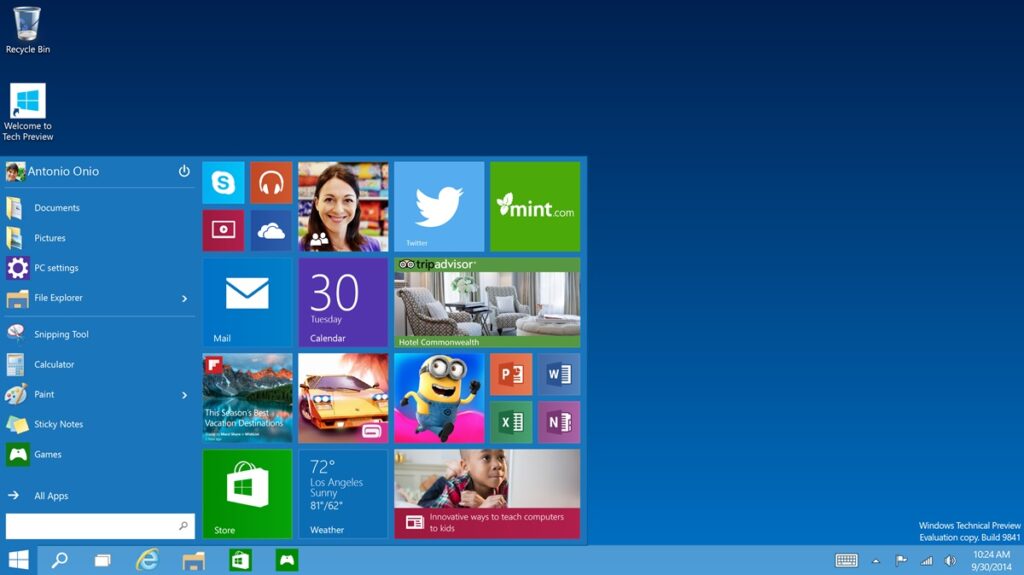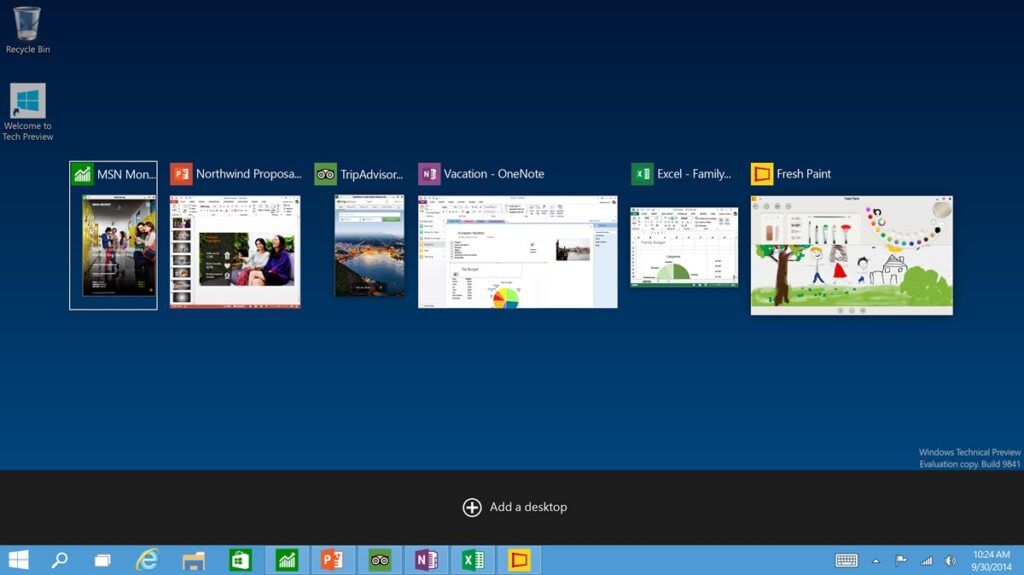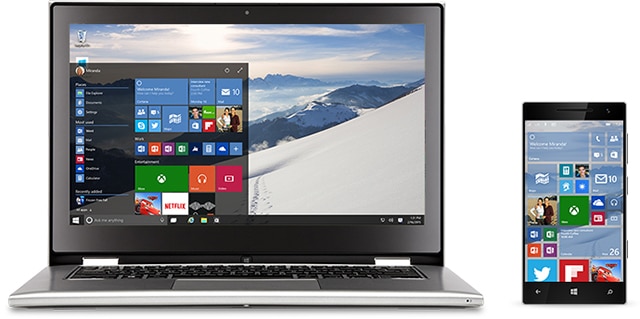On September 30, 2014, Microsoft skipped Windows 9 and unveiled its Windows 10 operating system. Stating that Windows is used by over 1.5 billion people worldwide, the company announced that Windows 10 will run on many electronic devices including servers and Internet of Thing (IoT) devices.
To avoid confusing customers as they did with Windows 8, Microsoft combined many elements from Windows 7 and 8 into Windows 10. The company brought back the Start menu from Windows 7 while allowing users to display Live Tiles in it.
Windows 10 will now run on desktop mode. Apps from the Windows Store will no longer annoyingly open in full screen and will give you the option to minimize it, maximize it, move around, or close it like any program from Windows 7 and before.
Another feature in Windows 10 is having four apps snapped on the same screen simultaneously. Using a quadrant layout, you can work on up to four apps with the Snap enhancement feature.
The OS also has a new task-view button that lets you quickly switch between open files and quick access to any desktops you create.
The Windows 10 Technical Preview (beta) was innitlaily released on Ocotber 1, 2014 through the Windows Insider Program, a program designed to give Microsoft feedback on you Windows usuage. The full commercial OS was later released to the public on July 29, 2015.
These are the features the Windows 10 Technical Preview initially had:
Start menu:

Apps from the Microsoft Store now run like a regular Windows program, not in full-screen mode like an app on a tablet:


